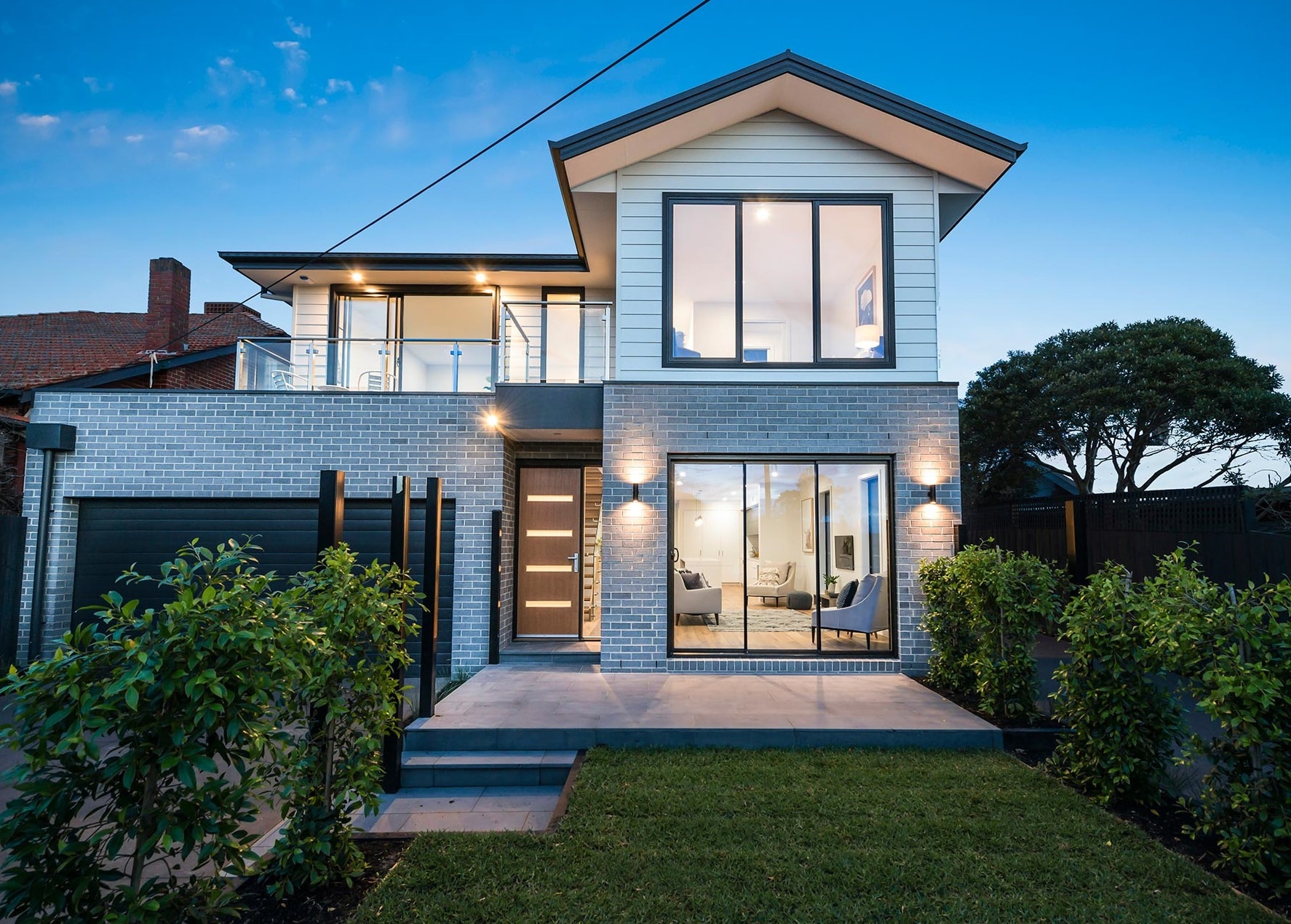One of the most common mistakes we see clients make when planning to build their dream home is not having a proper grasp of the costs involved in building. We often see clients putting aside $1 million, but that often doesn’t account for all the additional costs such as GST and consultant fees. On the blog today we’re breaking down the aspects involved in building a home in Melbourne and how they affect costs.
Size
Naturally, a larger house requires more materials, more labour, and sometimes even more specialised equipment to build. A larger house may also take longer to construct unless a larger team is employed. At SECON Constructions, we always try to find a happy medium between cost efficiency and quality.
Build quality
High quality materials, finishes and fittings naturally increase costs, but this is due to more than just the raw materials themselves. Better materials demand better finishing and a higher quality of craftsmanship, so naturally labour costs will increase proportionately.
Complexity of design and level of detail
Complex designs crafted by architects (often involving voids, split levels and open plans) will add to your building budget. Architectural plans will often be trickier to bring to life and may require specific materials and specialist contractors.
The most economical house plan is what we call standard details, which incorporate simple and conventional skirting, cornices, and architraves, with standard door and window sizes. These items are universally understood and available as opposed to components that have to be imported, customised, or carefully constructed.
Time frame
A builder with a larger team of experienced tradesmen who is able to guarantee a concrete deadline will require a premium price. A sole operator will be a much cheaper option per day, however they may take significantly longer.
Site access and site conditions
Builders need access to construction sites for delivery, storage and use of machinery. Some aspects that can interrupt this and cause increases in cost include sloping blocks, soil conditions, excavated rocks and sites near a water source (such as a beach, lake or flood plain).
This is why most display homes are only possible on regular, flat blocks. If your site has complications, you’ll need to work with a good architect, engineer and builder to overcome these challenges through design.
Luxury items and technology
Oftentimes clients may not understand how luxury additions can cause their budget to balloon. For instance, a basic rectangular swimming pool might start at $60,000 and seem affordable, but when you add in a pool fence, cover, heating, and self-cleaning, the price can easily double. The range of choices on the market when it comes to smart-technology can also cause costs to increase.
Energy efficiency
An energy efficient home has long-term benefits but can be costly when building. Builders in Victoria are now required to build new homes at a minimum energy rating of six stars. This means that most homes need to include glazing and insulation, which increases building costs.
Luxury homes aim to achieve seven stars or higher, which can be very expensive as they can require elements like hydronic heating, solar or geothermal power. Using recycled materials can also prove troublesome as they can be difficult to source as well as being more labour intensive.
So, what exactly does it cost to build a home?
It’s difficult to calculate the cost of a build without a quality surveyor or professional cost estimator however below is a rough guide assuming an average build cost per square metre of $3,000. Please note this is only a rough estimate as prices will vary greatly. For example, the cost to build a basement will differ significantly from the cost to build a kitchen.
Architect fees
For a long time, architectural fees have been estimated at around 10% of a building’s construction cost. But we believe this is too low. We often see the fee being between 10% and 15%, especially if you’re working with a high-quality, experienced architect.
Budget allowance calculation example:
A 300-square metre house built at $3,000 + GST per square metre = $900,000 + GST
Site conditions: for a significantly sloping block with limited access, allow an extra 10% of $900,000 = $90,000 + GST
Luxury items: for a heated swimming pool with cover and self-cleaning capability, allow an extra $100,000 + GST
Landscaping and fencing: allow an extra 15% = $135,000 + GST
Existing house demolition and site preparation: allow an extra $20,000 + GST
Architects fees including interior design: allow an extra at 6% of $1,245,000 = $74,700 + GST
Other consultants and fees: allow an extra $20,000 + GST
TOTAL BUDGET ALLOWANCE = $1,339,700 + GST= $1,473,670
From this example, we can see that someone wanting to build a 300 square metre home with a $1 million budget will be short $555,840. This is why it’s so important to understand the real costs involved in building your home from the get-go.


